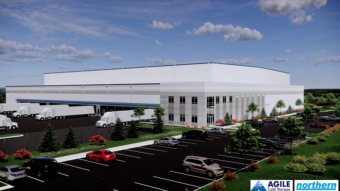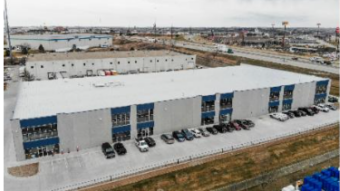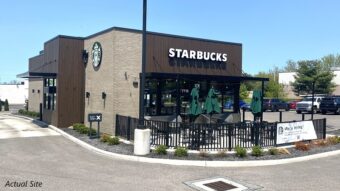Nationally and in Chicago, developers are turning to construction, innovation and technology to meet tenant demand for industrial product. According to Avison Young’s Q1 2018 market overview, the U.S. industrial market, all 12 billion square feet of it, ended the first-quarter of 2018 with an impressive five percent vacancy rate overall.
That’s despite a significant amount of new construction that was delivered. Chicago’s vacancy rate was a bit higher than the national average at 5.9 percent, but still a 30 bps drop year-over-year.
E-commerce and last-mile distribution hubs near population centers, data centers and bio-tech facilities continue to be prevailing demand generators. While industrial remains strong across the country, the report’s authors note that the rate of improvement has slowed as the overall average reached low single digits.
Responding to tenant demand, developers are attempting to create the most efficient product possible through innovation and technology. In land-constrained ports on the coasts, that means multi-level distribution warehouses.
Elsewhere, including the Chicago metro area where infill development remains trendy, obsolete or vacant properties of all types are being repurposed for industrial uses—including self-storage, which has been popping up in office-dense locations. Supply-chain logistics, technology and the availability of affordable power—both traditionally and alternatively sourced—will be key components in the long-term health of the industrial sector.
Over the 12-month period leading to last quarter, more than 22 million square feet was absorbed in Chicago, up 28 percent in comparison to the prior 12-month period. After a record-breaking year of construction activity with 21 million square feet delivered, new construction has moderated with slightly less than 10 million square feet underway. That’s down 42 percent from the first quarter of 2017.
Much of this new construction is being built on a speculative basis with only 30 percent designated as build-to-suit or pre-leased. Submarkets leading the region in new construction are the I-80 and I-55 corridors and O’Hare. As of the first quarter of 2018, these three submarkets have a combined 8.2 million square feet, or 81 percent, of total construction underway.
Infill development remains in vogue in the market, primarily near O’Hare. Developers have been razing older existing product and replacing it with larger, more modern buildings. CenterPoint Properties and Bridge Development have a combined 1 million square feet of product currently under construction.
Leasing demand remained strong throughout the first quarter of 2018 with a recorded 273 lease transactions totaling 7.5 million square feet. Recent lease transactions have been completed by third-party logistics firm Kenco, Wisconsin-based packaging company Uline and RJW Transportation. Submarkets that have recorded the most activity are the I-55, I-57 and US-64 corridors.
Chicago’s economy continued to trend upward with unemployment dropping 60 bps year-over-year to 5.4 percent as of January 2018. Jobs within the construction and manufacturing sectors saw moderate increases, up 2.4 and 1.2 percent, respectively, over the previous year.
With the anticipated implementation of last-mile logistics hubs, the market is poised to see increased demand for smaller footprints in highly populated areas. This trend will likely drive further infill development within O’Hare and submarkets inside Chicago’s city limits.



